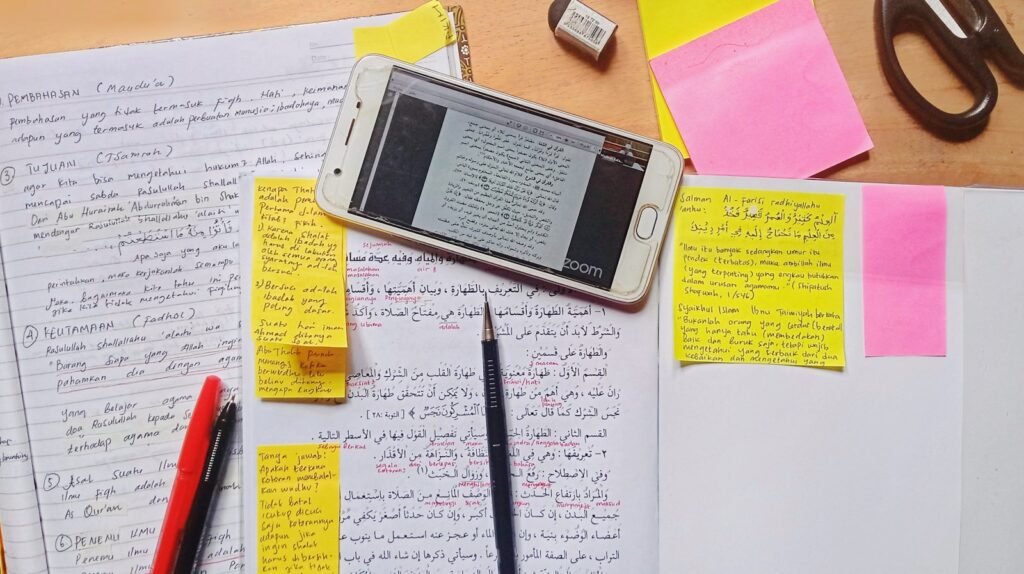
Why Citing Sources is Important
Envision a universe lacking citations- utter chaos, bewilderment, and creativity-crushing pandemonium! Just as the esteemed Sylvia Plath articulated, “Words possess more treachery and potency than we realize.” When we neglect to attribute credit where it belongs, we are essentially plundering another’s intellectual riches. It’s akin to attending a potluck with empty hands and departing with a satisfied stomach- sans any expression of gratitude!
Consider citations as the spice that imparts flavor to your intellectual concoction. As Oscar Wilde wittily remarked, “Quotation is a practical stand-in for wit.” By referencing sources, we are not only recognizing the brilliant minds that paved the way for our own ideas but also extending an invitation for others to partake in the feast of knowledge alongside us. So, dear companions, let us sprinkle some citation enchantment into our writing and acknowledge like the sophisticated intellectuals we aspire to be- after all, as Maya Angelou sagely observed: “When you know better, you do better.”
Common Types of Plagiarism to Watch Out For
So, you’ve concocted a magnificent essay brimming with profound insights and dazzling ideas. But wait a minute, could it be possible that you’re unknowingly stumbling into the cunning snares of plagiarism? Let’s delve into the chaotic realm of plagiarism and unravel some prevalent types that you should definitely avoid at all costs.
First off, we have the infamous “Ctrl+C, Ctrl+V” tactic, also known as direct plagiarism. This is when you unabashedly copy someone else’s work and attempt to pass it off as your own stroke of genius. As Shakespeare pondered, “To plagiarize or not to plagiarize, that is the question… and the answer must unequivocally be ‘not’!” Then there’s the secretive art of paraphrasing without acknowledging the original source. It’s akin to adorning another person’s cat with an extravagant hat and claiming it as your own stylish feline friend. Recall what Oscar Wilde wisely remarked, “Be yourself; everyone else is already taken… but their words? Leave those undisturbed where they were discovered.”
Examples of Proper Citation Styles
Oh, the enigmatic world of citations in academic writing. Let us delve into the intricate realm of proper citation styles, shall we? Behold the myriad options available – APA, MLA, Chicago… a veritable feast of formatting choices. Each style with its own peculiarities and regulations, but isn’t variety the essence of existence?
Imagine this: you are crafting your magnum opus of an essay when suddenly the need arises to sprinkle in some quotes for added flavor. This is where citing becomes essential. As the illustrious William Shakespeare once mused, “Better three hours too soon than a minute too late.” Therefore, do not delay in implementing those correct citations, dear comrades. For no one desires to be ensnared in the web of plagiarism – akin to donning socks with sandals; definitely not a good look.
The Consequences of Plagiarism
Oh, the treacherous aftermath of plagiarism! Let me tell you, my esteemed reader, it’s a veritable labyrinth in the realm of academia and beyond. When you dare to appropriate another’s words or ideas without acknowledging their rightful ownership, it’s not just risky business; it’s akin to waltzing barefoot on scorching embers!
Imagine this: you hand in a paper, convinced that you’ve aced it with all the enlightening content you’ve “borrowed,” only to be blindsided by accusations of plagiarism. As the illustrious Neil Gaiman once mused, “The world always seems brighter when you’ve just created something out of nothing.” Plagiarism swiftly dims that radiant world quicker than one can utter “copy and paste.” From plummeting grades to besmirched reputations, the repercussions of plagiarism are like a sudden smack across the face with a damp noodle. And trust me, no one desires a damp noodle encounter, metaphorically speaking. Thus, take heed of my counsel, dear reader, and navigate cautiously within the domain of academic integrity.
Tips for Paraphrasing Effectively
Paraphrasing is not just a simple word swap, my friends. It’s more like giving an old fence a fresh coat of paint same structure, but with a whole new look. You need to grasp the essence of the original words without getting too comfortable with them, you know what I’m saying? As the wise Maya Angelou once wisely stated, “I’ve learned that people will forget what you said, people will forget what you did, but people will never forget how you made them feel.” So when paraphrasing, aim to convey the same feeling in your own unique voice. Put your own spin on it and sprinkle some of your personality into it!
Remember, paraphrasing is about showing that you understand the main idea of the original text without committing plagiarism. It’s like adding your own twist to a classic recipe keeping the core ingredients while adding your special touch. As Shakespeare famously mused, “To thine own self be true.” So when rephrasing someone else’s words, stay true to yourself. Let your individuality shine through in your paraphrasing why settle for being a copycat when you can be the star of your own show? Am I right?
How to Use In-Text Citations Correctly
Imagine you’re effortlessly cruising through your essay, dropping some knowledge bombs left and right, when suddenly – bam! You need to throw in an in-text citation. No need to panic, my fellow wordsmith! Mastering the art of in-text citations is like sprinkling a little seasoning onto your academic dish – it enhances the flavor and showcases your scholarly prowess.
When it comes to in-text citations, always keep in mind the holy trinity: author’s last name, publication year, and page number (if applicable). As the illustrious William Shakespeare once pondered, “To cite or not to cite, that is the question.” Well said, Billy Shakes. The answer is crystal clear – always cite! Not only does it elevate your scholarly image but it also pays homage to the original brainiac who bestowed upon you the wisdom you are now relishing in your paper. So next time you insert that crucial in-text citation, do so with a panache worthy of garnering admiration even from Oscar Wilde himself.
Tools to Help with Proper Citations
Oh, the enigmatic world of citations! They are like hidden gems in the realm of academic writing, quietly playing a crucial role. It’s almost like trying to find the perfect attire for an extravagant soirée – striking that balance between elegance and impact without going overboard. But fret not, dear intellectuals, for in this era of digitization, we have a plethora of resources at our fingertips to assist us in mastering the art of flawless citations.
Behold, the indispensable ally of many a student: citation generators. These ingenious contraptions can conjure up a citation quicker than you can utter “APA format”. It’s akin to having your own personal aide who is well-versed in all citation styles – be it MLA, APA or Chicago! As Mark Twain once mused, “Why not venture out on a limb? That’s where one finds ripe fruit.” So why not take a leap of faith and allow these citation generators to shoulder the burden for you?
Following suit is the bibliographic management software. Picture having an ethereal librarian organizing all your sources meticulously on a virtual shelf. Equipped with functionalities that facilitate storage, categorization and even annotation of sources; it revolutionizes how one navigates through an ocean of references. In the words of Maya Angelou, “Do the best you can until you know better. Then when you know better, do better.” With these tools at our disposal, we can indeed elevate our scholarly pursuits to greater heights.
Understanding the Difference Between Summarizing and Plagiarism
Imagine this: you’re soaring through your latest academic mission, feeling invincible, when suddenly you encounter a barrier the daunting dilemma of summarizing versus plagiarizing. It’s like trying to find your way through a labyrinth blindfolded while juggling flaming torches; you’re unsure of where to step, and definitely don’t want to get scorched.
Let’s dissect it like this: summarizing is akin to putting a unique twist on someone else’s grand narrative, infusing it with your own fresh flavor. You’re essentially distilling their opus into a stylish nugget of wisdom that still pays homage where it belongs. It’s like spicing up your sandwich with an exciting new sauce same ingredients, just with an extra dose of flair. Plagiarism, on the flip side, is akin to sneakily sampling someone else’s cake and passing it off as your own creation. Not cool at all, right? As the illustrious Shakespeare once proclaimed, “Borrowing dulls the edge of husbandry.” So take the honorable path and acknowledge where credit is rightfully due your academic reputation will be grateful for it.
How to Create a Reference List
Crafting a reference list is akin to adding the final flourish to your scholarly masterpiece – it elevates the sophistication and credibility of your work. It’s like acknowledging the unsung hers who contributed to your success, reminiscent of Marie Curie attributing her achievements to “Perseverance and spirit have done wonders in all ages.” Your reference list is essentially the more refined sibling of a bibliography, showcasing all the sources you collaborated with while composing your magnum opus.
When compiling your reference list, embrace your inner librarian and adhere to the specific formatting guidelines dictated by your academic discipline. Whether you align yourself with MLA conventions or revel in APA principles, maintaining uniformity is paramount, much like Thomas Edison’s relentless pursuit of inventing the light bulb. Pay meticulous attention to details such as commas, italics, and hanging indents – there’s nothing more conspicuous than a haphazardly arranged set of references. A meticulously structured reference list not only garners admiration from educators but also shields you from accusations of intellectual theft.


